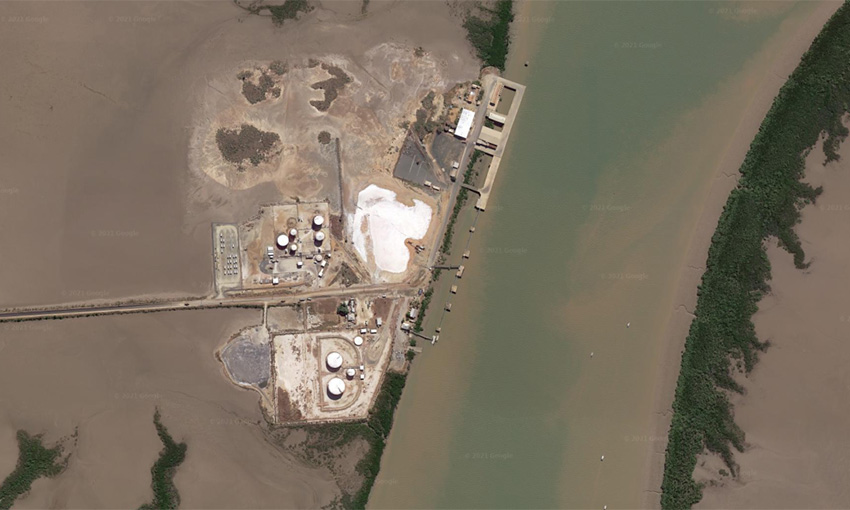MARITIME Safety Queensland and Gladstone Ports Corporation will use advanced computer modelling to support enhanced risk management at Port Alma.
MSQ general manager Angus Mitchell welcomed the use of advanced technology to help manage risk at the port. He said the move came following an extensive risk assessment at the port and stakeholder input.
“The MSQ assessment was conducted as part of an ongoing robust process for monitoring risk, and to ensure the highest safety standards are upheld in Queensland ports,” Mr Mitchell said.
“Port Alma is a major port of significance on the east coast of central Queensland and handles the largest dangerous goods and explosives trade nationally.”
Much of the cargo that crosses Port Alma’s wharf is dangerous goods. According to GPC, 57.8% of the port’s total throughput in 2018-19. Ammonium nitrate is used in fertiliser and as a component of explosives. It was a stockpile of this chemical that ignited on 4 August last year in Beirut, casing a devastating explosion.
Other commodities traded through Port Alma over 2018-19 included petroleum, explosives, tallow, salt, container cargo and general cargo.
Mr Mitchell said MSQ, in conjunction with GPC and port users, followed up the assessment with industry consultation regarding shipping movements and tug towage requirements in Port Alma.
“As a result of this consultation, MSQ will undertake further measures to further enhance safety at the port. This includes revised towage arrangements being considered for introduction from 1 January 2022,” he said.
“Supporting the safe movement of shipping in any of our ports is a prime focus for MSQ especially in a dynamic and evolving industry where keeping ahead of market demand and technology developments is critical.”
Simulation to be employed
Mr Mitchell said the Queensland government-owned Smartship Australia Simulator would play an important role in meeting this expectation.
“MSQ will work to develop a port model and a ship model at the Smartship Australia to assist GPC and marine pilots by running through real-time computer vessel simulations to further confidence in the findings of the risk assessment,” he said.
GPC chief operating officer Craig Walker welcomed the additional support to be provided by MSQ.
“Having a port model for Port Alma will assist all visiting trade vessels to ensure the highest level of safety standards,” Mr Walker said.
“Climate change and the changing character of shipping are factors influencing safe and efficient vessel movements in Port Alma – a critical link in the value chain for dangerous cargoes.
“It also abuts the Great Barrier Reef, and GPC has a strong commitment to protecting the GBR from any marine incidents.”
Mr Mitchell said the joint initiative between MSQ and GPC reflected the excellent relationship between the state maritime safety regulator and Queensland port authorities.
“We share a common goal, of conducting maximum trade in and out of the state, for the economic benefit of the state, but always with the safely of the community, seafarers, port infrastructure and the environment at the forefront,” Mr Mitchell said.
“This commitment has been particularly focussed during the COVID-19 pandemic and will continue past this global emergency.”

